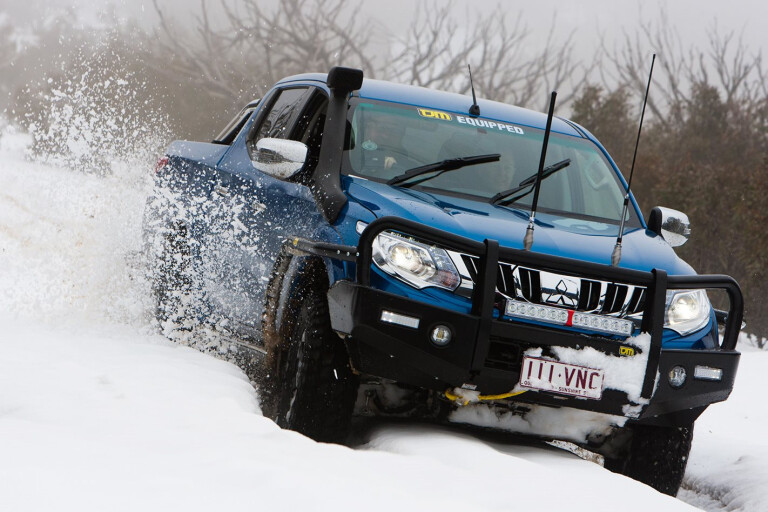
BUILDING a capable off-road rig is something that many of us dream of. First you select a vehicle (either new or secondhand) with the right options, and then you buy it.
Then the real fun begins – leafing through various catalogues or websites researching, specifying and choosing the gun hardware before getting the vehicle fitted-out, nose to tail, ready for some outback adventure.
It’s fun, but we often forget how intensive it is to design and develop aftermarket equipment. The process usually begins long before a new vehicle goes on sale. Most larger, established companies, such as TJM, usually know when a model is due to be replaced, so they can make preliminary plans to develop products for the replacement models.
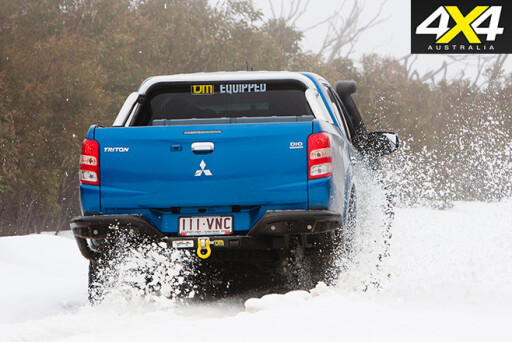 “We hear snippets of information from world-wide media,” TJM’s Jason Lock explains. “That will give us grounding on when to expect a new vehicle.”
“We hear snippets of information from world-wide media,” TJM’s Jason Lock explains. “That will give us grounding on when to expect a new vehicle.”
In fact, 2015 was a big and busy year for new product, with Nissan, Toyota and Mitsubishi launching new models, and Ford and Mazda revising the Ranger and the BT-50 respectively.
For TJM, the hands-on process for designing a new suite of hardware for Mitsubishi’s new Triton began with the purchase of this bright blue Triton. With the Triton manufactured in Thailand – as are most dual-cab utes – Thai showrooms are usually the first to see new models. These showrooms therefore give aftermarket specialists an opportunity to get a head-start on product development before the new models arrive in Australia.
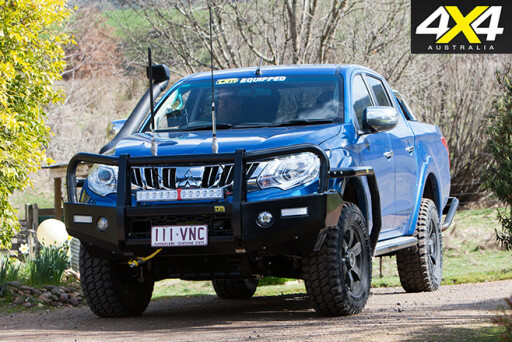 TJM was able to strip the new Triton’s nose and most of its undercarriage for inspection before the vehicle was available here.
TJM was able to strip the new Triton’s nose and most of its undercarriage for inspection before the vehicle was available here.
“We take a look at all the critical areas for the installation of frontal protection bars, canopies, snorkels and suspension – after the strip-down,” Jason explains. “All that data is put into CAD and modelled.”
With the homework completed, the Triton was pieced back together and loaded, ready for shipping to TJM’s head office in Brisbane. In the meantime, the engineers and fabricators got cracking on product design and prototype fabrication, and had much of the hard work done, ready for testing, by the time the Triton’s shipping container arrived.
 As well as double-checking that the products fit, testing was performed to ensure the vehicle could keep itself cool. Rigged-up with temperature probes, this Triton was loaded to its GCM (Gross Combination Mass) – the maximum loaded vehicle and trailer weight specified by the vehicle manufacturer – to ensure there was no effect on the vehicles’ radiators and the ability of the vehicle to keep itself cool.
As well as double-checking that the products fit, testing was performed to ensure the vehicle could keep itself cool. Rigged-up with temperature probes, this Triton was loaded to its GCM (Gross Combination Mass) – the maximum loaded vehicle and trailer weight specified by the vehicle manufacturer – to ensure there was no effect on the vehicles’ radiators and the ability of the vehicle to keep itself cool.
Testing to government regulations is critical, too. Unlike home-made parts, premium aftermarket manufacturers, such as TJM, ensure the vehicle’s continuing safety and legality – and ability to be registered and insured – by complying with federal design rules and state legislation. Sign-off occurs only after CAD modelling and destructive (crash) testing of prototype equipment.
For many Aussies, a frontal protection bar is a must-have, so its design was a priority for TJM. While that was happening, there were engineering staff working on other products such as a rear bar and side steps. And there’s plenty of other equipment underneath, such as suspension, battery trays, underbody protection and diff locks, and they all require similar commitment to engineering and testing.
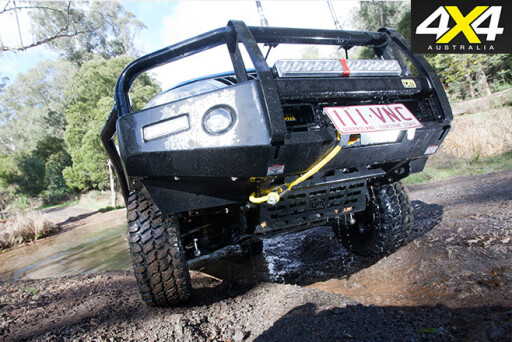 The Triton’s diff lockers were relatively easy – revisions were required to the front diff, but the rear locker from the previous model could be carried over. The Triton’s canopy, too, was a fuss-free process. “The canopy went straight from scan, to mould, to product and onto the vehicle [in one hit],” Jason says. “It was a pretty quick process.”
The Triton’s diff lockers were relatively easy – revisions were required to the front diff, but the rear locker from the previous model could be carried over. The Triton’s canopy, too, was a fuss-free process. “The canopy went straight from scan, to mould, to product and onto the vehicle [in one hit],” Jason says. “It was a pretty quick process.”
Sometimes there’s also some unexpected ‘testing’ involved. “I was on my way to the [Sydney] show, cruising along, all the lights blazing, the other morning,” Jason relates. “I hit a ’roo. I got out of the car thinking the worst... but all I’d done is knocked-around a driving light.
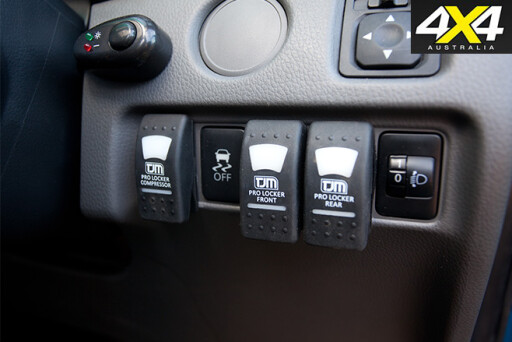 The bars are designed to be sacrificial; they’re designed to absorb energy from bigger impacts but keep the engine running and the vehicle mobile. That’s the priority. But like the other premium manufacturers, we need to do that with respect to the regulations, with deformation testing and rig testing for the ADRs.”
The bars are designed to be sacrificial; they’re designed to absorb energy from bigger impacts but keep the engine running and the vehicle mobile. That’s the priority. But like the other premium manufacturers, we need to do that with respect to the regulations, with deformation testing and rig testing for the ADRs.”
Other less glamorous details such as fitting instructions and parts lists must be finalised, too, before they can create advertising material. At the end of the process, overseas-spec vehicles must re-exported according to Customs requirements, so this Triton will end up back in Thailand. The designs are approved for manufacture only after all these processes – measuring, designing, hand-building of prototypes and testing – are complete.
 It’s usually a smooth, well-practiced process, but sometimes a spanner gets dropped into the cogs. “This year has been a big year for new vehicle releases,” Jason says. “So we’ve been working hard. We’ve had this new Triton, plus Navara and Hilux, and a facelifted Land Cruiser. There’s been a revision to Ranger and BT50 – a facelift – and the Navaras with the leaf-sprung rear, as they launched with coils first. So we’ve really had to prioritise product development. We have been flat-out!
It’s usually a smooth, well-practiced process, but sometimes a spanner gets dropped into the cogs. “This year has been a big year for new vehicle releases,” Jason says. “So we’ve been working hard. We’ve had this new Triton, plus Navara and Hilux, and a facelifted Land Cruiser. There’s been a revision to Ranger and BT50 – a facelift – and the Navaras with the leaf-sprung rear, as they launched with coils first. So we’ve really had to prioritise product development. We have been flat-out!
“There are some traps, too,” Jason continues. “For instance, there may be spec differences depending on the market. What is for sale overseas may not match what we see here, so we may have to revise the design for the Aussie-spec cars when they arrive.
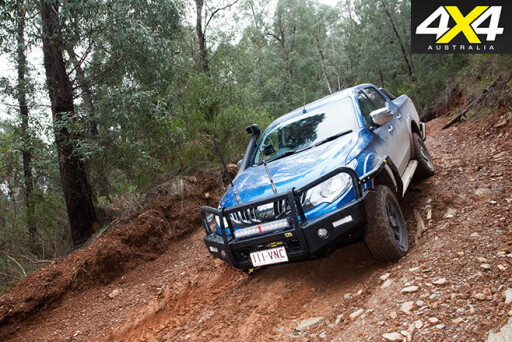 “But we design for export markets, too, so the effort is hardly ever wasted.”
“But we design for export markets, too, so the effort is hardly ever wasted.”
The result is world-renowned equipment. “What works in Australia – as far as quality and durability is concerned – works anywhere in the world,” he says. “All our gear – and the gear produced by other premium Australian companies – is well regarded all around the world.”
4X4 Australia was lucky enough to snag TJM’s freshly built MQ Triton straight after it was built for an off-road test in the Victorian High Country. Some of the gear on it was still in development stages and not yet the final product.
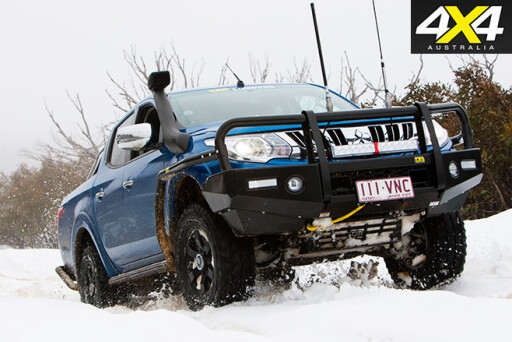 Possibly the first twin-locked MQ Triton on the planet, the TJM truck features the company’s Pro Lockers front and rear; the necessary air compressor to activate the lockers; a full Series 4000 suspension kit; a new-design 63mm T13 outback bullbar; a TJM Torq 9500lb winch; a TJM rear bar and side steps; TJM underbody protection plates; an Airtec intake snorkel; an Xray LED Optic lightbar; a GME UHF radio and an aerial; a Strike car phone kit with an aerial; TJM floor mats; TJM space cases; a TJM recovery kit; a TJM high-lift jack and base; an Aeroklas tub liner; and back alloy wheels with 33-inch Achilles muddies.
Possibly the first twin-locked MQ Triton on the planet, the TJM truck features the company’s Pro Lockers front and rear; the necessary air compressor to activate the lockers; a full Series 4000 suspension kit; a new-design 63mm T13 outback bullbar; a TJM Torq 9500lb winch; a TJM rear bar and side steps; TJM underbody protection plates; an Airtec intake snorkel; an Xray LED Optic lightbar; a GME UHF radio and an aerial; a Strike car phone kit with an aerial; TJM floor mats; TJM space cases; a TJM recovery kit; a TJM high-lift jack and base; an Aeroklas tub liner; and back alloy wheels with 33-inch Achilles muddies.
We were impressed at the ease with which it tackled the terrain and deep snow, and the control the Series 4000 suspension afforded on gravel roads. In the deeper snow that challenged some other vehicles on this trip, the trim Pro Lockers allowed us to power on without too much fuss. The barwork protected the pretty blue paint and provided a platform to mount the extra lighting that proved its worth in the dark.
The TJM transformation shows just how an affordable ute like the Triton can be transformed into a competent, go-anywhere vehicle.

COMMENTS